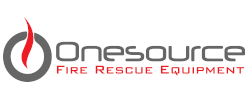Product Description
ATI’S JAFRIB is a synthetic, single-jacket hose with a nitrile/PVC rubber lining and cover. JAFRIB is made in a single extrusion, eliminating the risks of jacket separation. The outside jacket offers superior resistance to acids, alkalis, oils, gasoline and ozone. JAFRIB is available in red and yellow, in lengths of 50’ and 100’ and can be coupled with NST, NPSH, Storz or other, special order couplings. Shorter lengths are available by special order.
JAFRIB is a superior nitrile rubber hose for use in supply and attack operations where resistance to
petroleum, chemicals, and abrasion is critical. JAFRIB meets or exceeds NFPA 1961 Fire Hose
Standard, 2007 edition.
Jacket Construction: Hose shall be made from 100% high tenacity synthetic yarn, circular woven and
completely protected and locked-in by tough, highly ozone resistant synthetic nitrile rubber using a single
through-the-weave extrusion process. This construction forms a single, homogenous construction without
the use of glues or adhesives of any type.
Lining Properties: The tensile strength of the lining and cover shall not be less than 1750 p.s.i, with an
ultimate elongation of liner and cover not less than 500%. Permanent elongation shall not be greater
than 25%.
Adhesion: The adhesion between the liner and the inside jacket is such that the rate of separation of a
1.5" wide strip cut transversely, shall not be greater than 1" per minute over a period of ten minutes, under
a weight of 16 pounds.
Accelerated Aging: Lining specimens subjected to an exposure of 158ºF ± 3.6ºF, for a duration of 96
hours shall be conditioned as per ASTM D 573, Standard Test Method for Rubber – Deterioration in an
Air Oven. Then, the specimens shall be tested to ASTM D4112, Standard Test Methods for Vulcanized
Rubber and Thermoplastic Elastomers- Tension, Method A. Under evaluation, the tensile and elongation
properties of the liner shall not be less than 75% of their initial values.
Couplings: Expansion-type in hardcoat anodized aluminum or Storz couplings are available. The
anodize process creates a hard aluminum oxide coating which improves the abrasion, corrosion and
electrolysis resistance of the completed fitting, while also preventing excessive wear on the male and
female threads. All couplings meet NFPA 1963, Standard for Fire Hose Connections, 2009 edition.
2.jpg)





